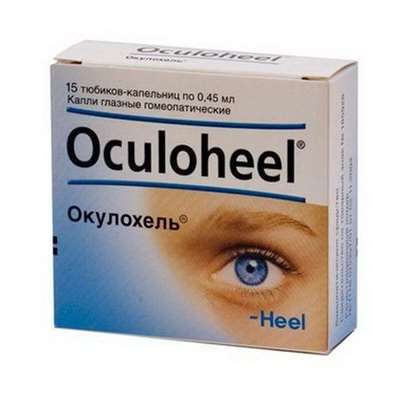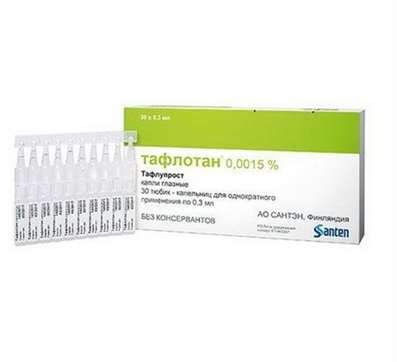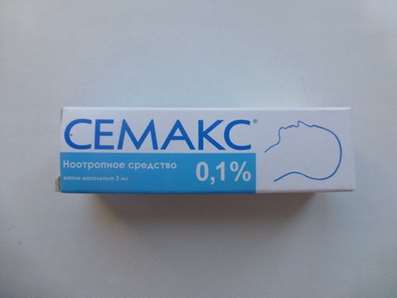Instruction for use: Levomepromazine
I want this, give me price
The Latin name of the substance Levomepromazine
Levomepromazinum (genus. Levomepromazini)
Chemical name
(R) -2-Methoxy-N, N, beta-trimethyl-10H-phenothiazine-10-propanamine (as maleate (1: 1) or hydrochloride)
Gross formula
C19H24N2OS
Pharmacological group:
Neuroleptics
The nosological classification (ICD-10)
B02.2 Shingles with other complications from the nervous system
F20 Schizophrenia: Schizophrenic Conditions; An exacerbation of schizophrenia; Schizophrenia; Chronic schizophrenia; Dementia praecox; Bleuler's disease; Psychotic discordant; Dementia early; The febrile form of schizophrenia; Chronic schizophrenic disorder; Psychosis of the schizophrenic type; Acute form of schizophrenia; Acute schizophrenic disorder; Cerebral Organic Insufficiency in Schizophrenia; Acute attack of schizophrenia; Schizophrenic psychosis; Acute schizophrenia; Sluggish schizophrenia; Sluggish schizophrenia with apathoabulic disorders; Acute stage of schizophrenia with agitation
F28 Other Inorganic Psychotic Disorders: Affective psychoses; Involutional psychosis; Psychoinstrumental; Psycho senile; Psychic senile; Senile psychosisl; Structural Involutionary Psychosis; Static psychosis
F29 Inorganic psychosis, unspecified: Childhood psychoses; Psychomotor agitation in psychoses; Hallucinatory-delusional disorders; Hallucinatory-delusional syndrome; Intoxication psychosis; Manic-delusional disorders; Manic chronic psychosis; Manic psychosis; Acute psychosis; Paranoid psychosis; Subacute psychosis; Presenile psychosis; Psychosis; Intoxication psychosis; Psychosis is paranoid; Psychosis in children; Reactive psychosis; Chronic psychosis; Chronic hallucinatory psychosis; Chronic psychosis; Chronic psychotic disorder; Schizophrenic psychosis
F31 Bipolar affective disorder: Mood disorders bipolar; Affective bipolar psychosis; Manic-melancholic psychosis; Intermittent psychosis; Circular psychosis; Cyclophrenia; Bipolar disorders; Bipolar disorders; Bipolar psychosis; Affective insanity; Manic-depressive syndrome; Psycho Manic-Depressive; Depressive episode of bipolar disorder
F79 Mental retardation, unspecified: Mental retardation; Infantilism mental; Violation of mental activity; Oligophrenia; Lag behind mental development; Slowed development of intellectual abilities in children and adolescents; Delayed mental development in children; Maloumia; Oligopsihia; Mental failure; Impaired mental function; Lag behind in mental development; Lack of intellectual development in children; Lack of mental development in children; Mental retardation; Lack of mental development in children; Mental retardation
G40.9 Epilepsy, unspecified: Refractory epilepsy in children; Absence; Psychomotor epilepsy; Epilepsy; Epileptiform cramps; Epileptiform syndrome; Epileptic syndrome; Anxiety seizures; Atypical absences
G50.0 Trigeminal neuralgia: trigeminal neuritis; Painful tic; Idiopathic neuralgia of the trigeminal nerve; Neuralgia of the trigeminal nerve; Essential neuralgia of the trigeminal nerve; Pain syndrome in trigeminal neuralgia; Painful tic; Trigeminal neuralgia; Neuralgia of the trigeminal nerve
G51 Lesions of the facial nerve: Neuralgia of the facial nerve; Neuritis of the facial nerve; Paralysis of the facial nerve; Pain syndrome with neuritis of the facial nerve; Peripheral paralysis of the facial nerve; Paresis of the facial nerve
G53.0 Neuralgia after shingles (B02.2 +): Postherpetic neuralgia; Postherpetic neuralgia in adults
R45.1 Anxiety and agitation: Agitation; Anxiety; Explosive excitability; Internal stimulation; Excitability; Excitation; Excitation acute; Psychomotor agitation; Hyperexcitability; Motor excitement; Cessation of psychomotor agitation; Nervous excitement; Restlessness; Night trouble; Acute stage of schizophrenia with agitation; Acute mental agitation; Paroxysm of excitation; Overexcitation; Increased excitability; Increased nervous excitability; Increased emotional and cardiac excitability; Increased agitation; Mental arousal; Psychomotor agitation; Psychomotor agitation in psychoses; Psychomotor agitation of an epileptic nature; Psychomotor paroxysm; Psychomotor fit; Symptoms of Excitation; Symptoms of psychomotor agitation; The state of agitation; A state of anxiety; Excitation status; A state of heightened concern; The state of psychomotor agitation; Conditions of anxiety; Excitation conditions; The state of excitement in somatic diseases; Excitation level; Feelings of anxiety; Emotional arousal
R52.9 Unspecified pain: Pain after cholecystectomy; Pain shooting; Non-malignant pain syndrome; Obstetric and gynecological pain; Pain syndrome; Pain syndrome in the postoperative period; Pain syndrome in the postoperative period after orthopedic operations; Painful syndrome of inflammatory genesis; Pain syndrome of non-oncological genesis; Pain syndrome after diagnostic procedures; Pain syndrome after the diagnostic intervention; Pain syndrome after operations; Pain syndrome after surgery; Pain syndrome after orthopedic surgery; Pain syndrome after trauma; Pain syndrome after removal of hemorrhoids; Pain syndrome after surgery; Pain syndrome with inflammation of non-rheumatic nature; Pain syndrome with inflammatory lesions of the peripheral nervous system; Pain syndrome in diabetic neuropathy; Pain syndrome in acute inflammatory diseases of the musculoskeletal system; Pain syndrome in the pathology of tendons; Pain syndrome with smooth muscle spasms; Pain syndrome with smooth muscle spasms (renal and biliary colic, intestinal spasm, dysmenorrhea); Pain syndrome with spasms of smooth muscles of internal organs; Pain syndrome with spasms of smooth muscles of internal organs (renal and biliary colic, intestinal spasm, dysmenorrhea); Pain syndrome with injuries; Pain syndrome with injuries and after surgical interventions; Pain syndrome in chronic inflammatory diseases of the musculoskeletal system; Pain syndrome with duodenal ulcer; Pain syndrome with peptic ulcer disease; Pain syndrome with peptic ulcer of stomach and duodenum; Painful sensations; Pain during menstruation; Pain syndromes; Painful conditions; Painful leg fatigue; Gum pain when wearing dentures; The pain of exit points of cranial nerves; Painful irregular menstruation; Painful dressings; Painful muscular spasm; Painful growth of teeth; Pain; Pain in lower limbs; Pain in the area of the operating wound; Pain in the postoperative period; Pain in the body; Pain after diagnostic interventions; Pain after orthopedic surgery; Pain after surgery; Pain in the flu; Pain in diabetic polyneuropathy; Pain in burns; Pain in intercourse; Pain during diagnostic procedures; Pain during therapeutic procedures; Pain for colds; Pain with sinusitis; Pain in case of injury; Pain of a traumatic nature; Pain in the postoperative period; Pain after Diagnostic Interventions; Pain after sclerosing therapy; Pain after surgery; Postoperative pain; Postoperative and post-traumatic pain; Post-traumatic pain; Pain when swallowing; Pain in infectious inflammatory diseases of the upper respiratory tract; Pain with burns; Pain with traumatic muscle damage; Pain in case of injury; Pain when extracting a tooth; Pain of traumatic origin; Pain caused by spasm of smooth muscles; Severe pain syndrome; Severe pain syndrome of traumatic origin; Postoperative pain; Postoperative pain syndrome; Post-traumatic pain; Post-traumatic pain syndrome; Torpid pain syndrome; Traumatic pain; Moderate pain; Moderately expressed pain syndrome; Moderate pain syndrome; Polyartralgia in polymyositis
Z100.0 * Anesthesiology and premedication: Abdominal surgery; Adenomectomy; Amputation; Angioplasty of the coronary arteries; Carotid artery angioplasty; Antiseptic treatment of skin in wounds; Antiseptic treatment of hands; Appendectomy; Atheroctomy; Balloon coronary angioplasty; Vaginal hysterectomy; Venous bypass; Interventions on the vagina and cervix; Interventions on the bladder; Interference in the oral cavity; Reconstructive-reconstructive operations; Hand hygiene of medical personnel; Gynecological Surgery; Gynecological interventions; Gynecological operations; Hypovolemic shock during surgery; Disinfection of purulent wounds; Disinfection of the edges of wounds; Diagnostic Interventions; Diagnostic procedures; Diathermocoagulation of the cervix; Long-term surgeries; Replacement of fistulous catheters; Infection in orthopedic surgical interventions; Artificial heart valve; Kistectomy; Short-term outpatient surgery; Short-term operations; Short-term surgical procedures; Cryotyreotomy; Blood loss during surgical interventions; Bleeding during surgery and in the postoperative period; Laser coagulation Laserocoagulation; Laser retinopathy of the retina; Laparoscopy; Laparoscopy in gynecology; Likvornaya fistula; Small gynecological operations; Small surgical interventions; Mastectomy and subsequent plastic surgery; Mediastinotomy; Microsurgical operations on the ear; Mukinging operations; Suturing; Minor surgery; Neurosurgical operation; Eclipse of the eyeball in ophthalmic surgery; Orchiectomy; Pancreatectomy; Pericardectomy; The rehabilitation period after surgical operations; Reconvalence after surgical intervention; Percutaneous transluminal coronary angioplasty; Pleural Thoracocentesis; Pneumonia postoperative and post traumatic; Preparing for surgical procedures; Preparing for a surgical operation; Preparation of the surgeon's arms before surgery; Preparation of the colon for surgical interventions; Postoperative aspiration pneumonia in neurosurgical and thoracic operations; Postoperative nausea; Postoperative hemorrhage; Postoperative granuloma; Postoperative shock; Early postoperative period; Myocardial revascularization; Resection of the apex of the tooth root; Resection of the stomach; Bowel resection; Resection of the uterus; Liver resection; Small bowel resection; Resection of a part of the stomach; Reocclusion of the operated vessel; Gluing of tissues during surgical interventions; Suture removal; Condition after eye surgery; Condition after surgery in the nasal cavity; Condition after gastrectomy; Condition after resection of the small intestine; Condition after tonsillectomy; Condition after removal of duodenum; Condition after phlebectomy; Vascular Surgery; Splenectomy; Sterilization of surgical instrument; Sterilization of surgical instruments; Sternotomy; Dental surgery; Dental intervention on periodontal tissues; Strumectomy; Tonsillectomy; Thoracic surgery; Total gastrectomy; Transdermal intravascular coronary angioplasty; Transurethral resection; Turbinectomy; Removal of a tooth; Cataract removal; Removing Cysts; Removal of tonsils; Removal of myoma; Removal of mobile milk teeth; Removal of polyps; Removal of a broken tooth; Removal of the uterus; Removal of seams; Urethrotomy; Fistula of the luminal ducts; Frontoetmoidogamotomy; Surgical infection; Surgical treatment of chronic ulcers of extremities; Surgery; Surgery in the anus; Surgery on the large intestine; Surgical practice; Surgical procedure; Surgical interventions; Surgical interventions on the digestive tract; Surgical interventions on the urinary tract; Surgical interventions on the urinary system; Surgical interventions on the genitourinary system; Surgical intervention on the heart; Surgical procedures; Surgical operations; Surgical operations on veins; Surgical intervention; Vascular Surgery; Surgical treatment of thromboses; Cholecystectomy; Partial resection of the stomach; Extraperitoneal hysterectomy; Percutaneous transluminal coronary angioplasty; Percutaneous transluminal angioplasty; Coronary artery bypass grafting; Extirpation of the tooth; Extirpation of infant teeth; Extirpation of pulp; Extracorporeal circulation; Extraction of the tooth; Extraction of teeth; Extraction of cataracts; Electrocoagulation; Endourological interventions; Episiotomy; Ethmoidotomy; Complications after tooth extraction
CAS code
60-99-1
Characteristics of the substance Levomepromazine
The phenothiazine derivative. Yellowish white, slightly hygroscopic powder. Is unstable to light and air. Very soluble in water, alcohol, chloroform; almost nerastvorim on the air.
Pharmacology
Pharmacological action - analgesic, antipsychotic, neuroleptic, antiemetic.
It blocks dopamine receptors of various brain structures (including mesolimbic, mesocortical). Reduces the productive symptoms of psychosis - nonsense, hallucinations, psychomotor agitation. Has strong adrenoblocking, moderate anticholinergic and antihistamine properties. Has analgesic effect.
Quickly and fairly fully absorbed in any way of administration. Cmax is achieved 1-3 hours after oral administration and after 0.5-1.5 h after injection. It passes through the histohematological barriers, including the BBB, and is distributed in organs and tissues. Intensively biotransformed. The main active metabolite, N-desmethyl mono- metotrimeprazine, is further converted to monosulfoxide. T1 / 2 levomepromazina - 16-78 h. It is excreted mainly in the form of metabolites with urine and bile.
Application of Levomepromazine
Psychomotor agitation of various etiologies (for acute and chronic schizophrenia, bipolar disorder, psychoses, including senile, intoxication, oligophrenia, epilepsy), as well as other mental disorders that occur with agitation, anxiety, panic, phobias, persistent insomnia. Strengthening the action of analgesics, funds for general anesthesia, antihistamines). Pain syndrome with neuralgia of trigeminal and neuritis of the facial nerve, shingles.
Contraindications
Hypersensitivity, simultaneous reception of antihypertensive drugs; overdosage of drugs that cause inhibition of the central nervous system (alcohol, general anesthetics, hypnotics), closed angle glaucoma, urinary retention, Parkinson's disease, multiple sclerosis, myasthenia gravis, hemiplegia, chronic heart failure in decompensation stage, severe renal and / or hepatic insufficiency, severe arterial hypotension, oppression of bone marrow hematopoiesis, porphyria, pregnancy, breastfeeding, children under 12 years.
Restrictions on the use
Epilepsy, patients with a history of cardiovascular disease, especially in the elderly (impaired cardiac muscle conduction, arrhythmia, congenital QT interval prolongation syndrome).
Application in pregnancy and lactation
Do not use during pregnancy, except when the intended benefit to the mother exceeds the potential risk to the fetus. For the duration of treatment, breastfeeding should be stopped (levomepromazin penetrates into breast milk).
Side effects of Levomepromazine
From the side of the cardiovascular system and blood (hematopoiesis, hemostasis): decreased blood pressure, orthostatic hypotension, tachycardia, Morgagni-Adams-Stokes syndrome, prolongation of the QT interval (arrhythmogenic effect, tachycardia of the pirouette type) (see also "Restrictions on use "), Pancytopenia, agranulocytosis, leukopenia, eosinophilia, thrombocytopenia.
On the part of the nervous system and sensory organs: confusion, slurred speech, extrapyramidal symptoms with a prevalence of akinetic-hypotonic syndrome, epileptic seizures, increased intracranial pressure, neuroleptic malignant syndrome (NZS); with long-term use - deposits in the lens and cornea, pigmentary retinopathy.
On the part of the intestine: dry mouth, constipation, discomfort in the abdomen, nausea, vomiting, liver damage (jaundice, cholestasis).
Allergic reactions: laryngeal edema, peripheral edema, anaphylactoid reactions, bronchospasm, urticaria, exfoliative dermatitis.
Other: bleaching of urine, impaired urination, galactorrhea, menstrual irregularity, weight loss, increased photosensitivity, erythema, pigmentation, hyperthermia (may be the first sign of NCS), pain and swelling at the injection site. Some patients who have been receiving phenothiazines for a long time have described the development of pituitary adenoma, but further studies are needed to establish its causal relationship with these drugs.
Interaction
Incompatible with MAO inhibitors (increased risk of extrapyramidal disorders due to decreased inactivation of the drug in the liver) and hypotensive drugs (risk of orthostatic hypotension). Means that depress the central nervous system (narcotic analgesics, general anesthetics, anxiolytics, sedatives and hypnotics, tricyclic antidepressants), increase the inhibitory effect of the drug on the central nervous system.
Caution should be exercised when combined with anticholinergic drugs (tricyclic antidepressants, H1-histamine receptor blockers, some anti-Parkinsonian drugs, atropine, scopolamine, succinylcholine) due to increased anticholinergic effects (paralytic ileus, urinary retention, glaucoma). QT prolonging agents (antiarrhythmics, macrolides, antifungal azoles, cisapride, antidepressants, antihistamines, and diuretics that lower potassium levels) increase the risk of prolonging the QT interval and increase the risk of arrhythmia.
Levomepromazine reduces the antiparkinsonian activity of levodopa, the effectiveness of oral antidiabetic drugs. Antacids containing calcium, magnesium or aluminum, reduce absorption in the digestive tract (levomepromazin should be taken 1 hour before or 4 hours after taking antacid drugs). When combined with alcohol, inhibition of the central nervous system increases and the likelihood of extrapyramidal side effects increases.
Overdose
Symptoms: arterial hypotension, conduction abnormalities in the cardiac muscle (prolongation of the QT interval, ventricular pirouette tachycardia, atrioventricular blockade), depression of consciousness of varying severity (up to coma), extrapyramidal symptoms, sedative effect, epileptic seizures.
Treatment: resuscitation, symptomatic therapy. The specific antidote is unknown. Forced diuresis, hemodialysis and hemoperfusion are not effective.
Routes of administration
Inside, IM, IV.
Precautions for the substance Levemepromazine
It is necessary to change the injection site because of the possible local tissue reaction (IM injections are painful). It is recommended to conduct a systematic blood test and evaluate liver function, in elderly and weakened patients, blood pressure control is necessary. During the first 3-5 days of treatment after taking levomepromazine, regardless of dose and method of administration, the patient is recommended to lie 0.5-1 h in order to prevent orthostatic collapse. It should be borne in mind that with rapid increases in doses, especially in the elderly or in patients with vascular insufficiency, drug delirium may develop.
After a sudden discontinuation of the drug, used in high doses or for a long time, nausea, vomiting, headache, tremor, increased sweating, tachycardia, insomnia and anxiety, as well as the development of tolerance to the sedative effects of phenothiazines and cross tolerance to various antipsychotics. In this regard, the abolition of the drug should always be done gradually.
Many antipsychotics, incl. levomepromazine, can reduce the threshold of convulsive readiness and cause epileptiform changes in the EEG. Therefore, when selecting a dose in patients with epilepsy, clinical indicators and EEG should be constantly monitored.
The development of cholestatic jaundice depends on the individual sensitivity of the patient and completely disappears after discontinuation of the drug administration. Therefore, long-term treatment requires regular monitoring of liver function.
Do not use during work drivers of vehicles and people whose profession is associated with increased concentration of attention. In the period of treatment and within 4-5 days after stopping the intake of levomepromazine, the refusal of alcoholic beverages is mandatory.

 Cart
Cart





